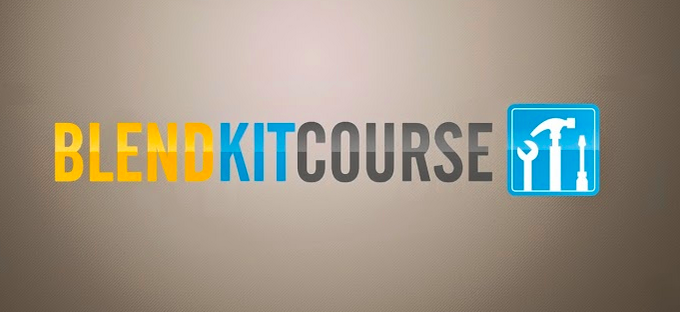A colleague recently heard about a massively open online course (MOOC) called BlendKit 2016: Becoming a Blended Learning Designer. This is the first in a series of posts about my experience in this course.
A colleague recently heard about a massively open online course (MOOC) called BlendKit 2016: Becoming a Blended Learning Designer. She was able to recruit several staff and faculty members to be part of our cohort, with the understanding that if we complete the program (including a portfolio submission), our employer would pay for the certificate. This is the first in a series of posts about my experience in this course.
As part of the course is posting to a blog, I am writing out my thoughts over the next 6 weeks. For this first week, the reading defined hybrid learning, describing the steps in the process of designing a course, as well as two illustrative examples.
This chapter provides solid advice for initially building out any course – start with the objectives, and then plan out the rest of the course from there. I think this quote summarized the chapter pretty well for me – “The focus should be first on the learning, and second on the technologies that will support that learning.” Too often, when planning a hybrid or online course, I think faculty tend to focus more on the technology than the teaching, especially if they are not very tech-savvy. In many ways, that makes sense, since there’s a lot involved in getting up-to-speed with technology, including learning how to set things up, and then the administrative aspect (i.e., resubmissions, grading, etc.) once the course is up and running. If someone is not technically savvy, that can be a big obstacle to offering a blended or online course. However, the ideal approach, as the chapter states, is to focus on what the goals are for learning first, in order to figure out the technology that best supports that goal.
In addition to the reading, I also completed the “Week 1 DIY Task.” This activity asks us to begin designing a hybrid course. I will use my face-to-face course, “Object-Oriented Programming” (or OOP for short), for all of the activities in this course. The Week 1 activity involved completing a Course Blueprint and a Venn Diagram with two circles, one for “Face to Face” and another for “Online,” with each circle containing a list of activities that will be completed, with the middle, shared space reserved for activities completed in both areas.
The latter Venn Diagram activity was not too difficult, as I had a good idea of how I would structure my OOP course, with a lecture on theoretical aspects during the face-to-face class, and recorded videos and practice coding exercises for the online portion of the course. I found myself struggling a bit more with the Course Blueprint, which was strange. Countless times I have looked at course blueprints, I have given them to faculty, shown them example ones, yet I had difficulty doing my own. Why? Because I had never thought about my course in terms of modules, and I had not even mapped out the chapters I wanted to cover from the textbook.
The activity forced me to go through the textbook, and identify the topics I wanted to cover for each week, and group them into 6 modules. Each module should have objectives, but I’m still working on them. And for assessments, each week will consist of a homework assignment. There will likely also be quizzes, but I’m not sure how many yet.
Lots of work ahead, but I’ve got a good start!
